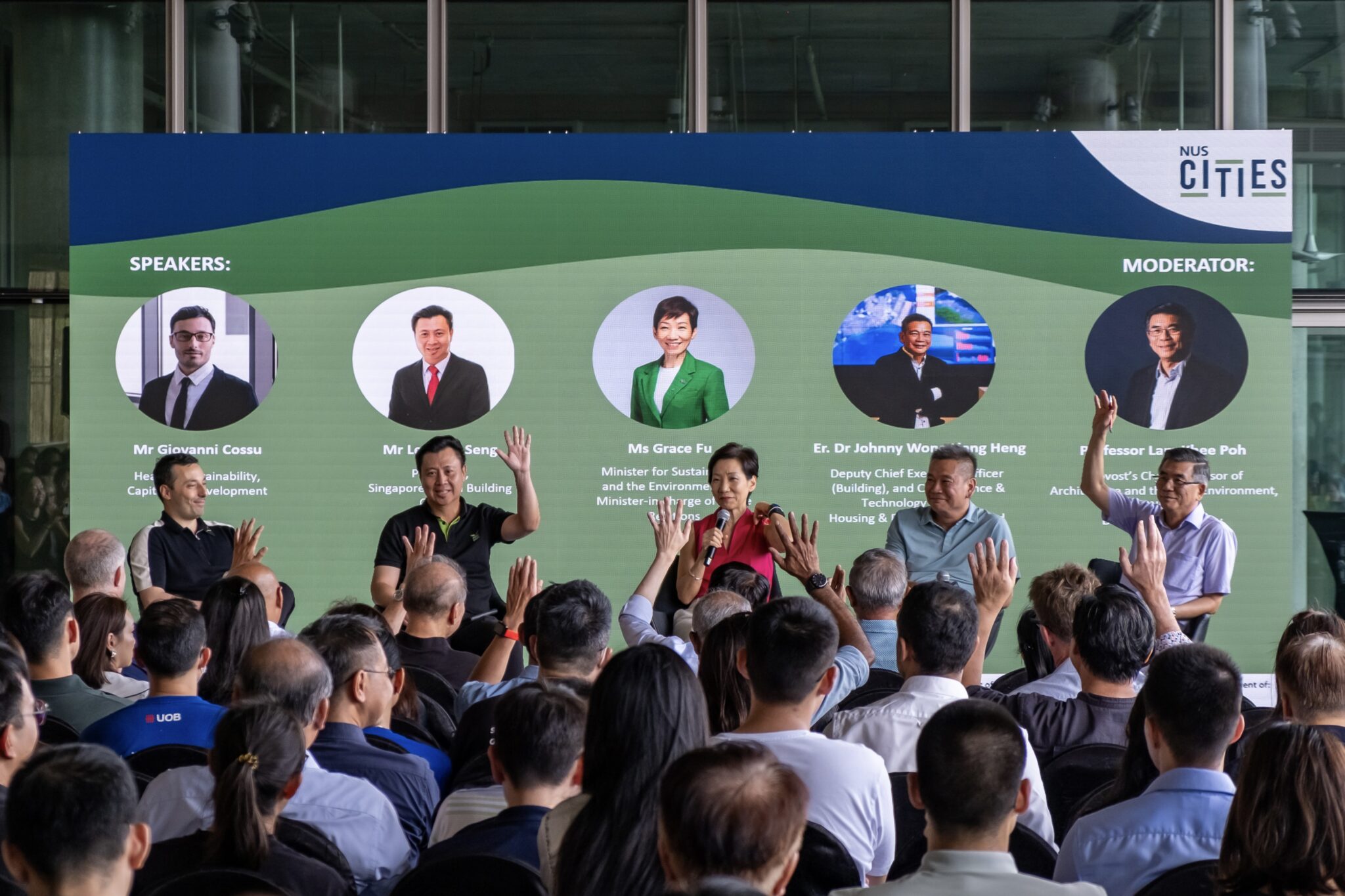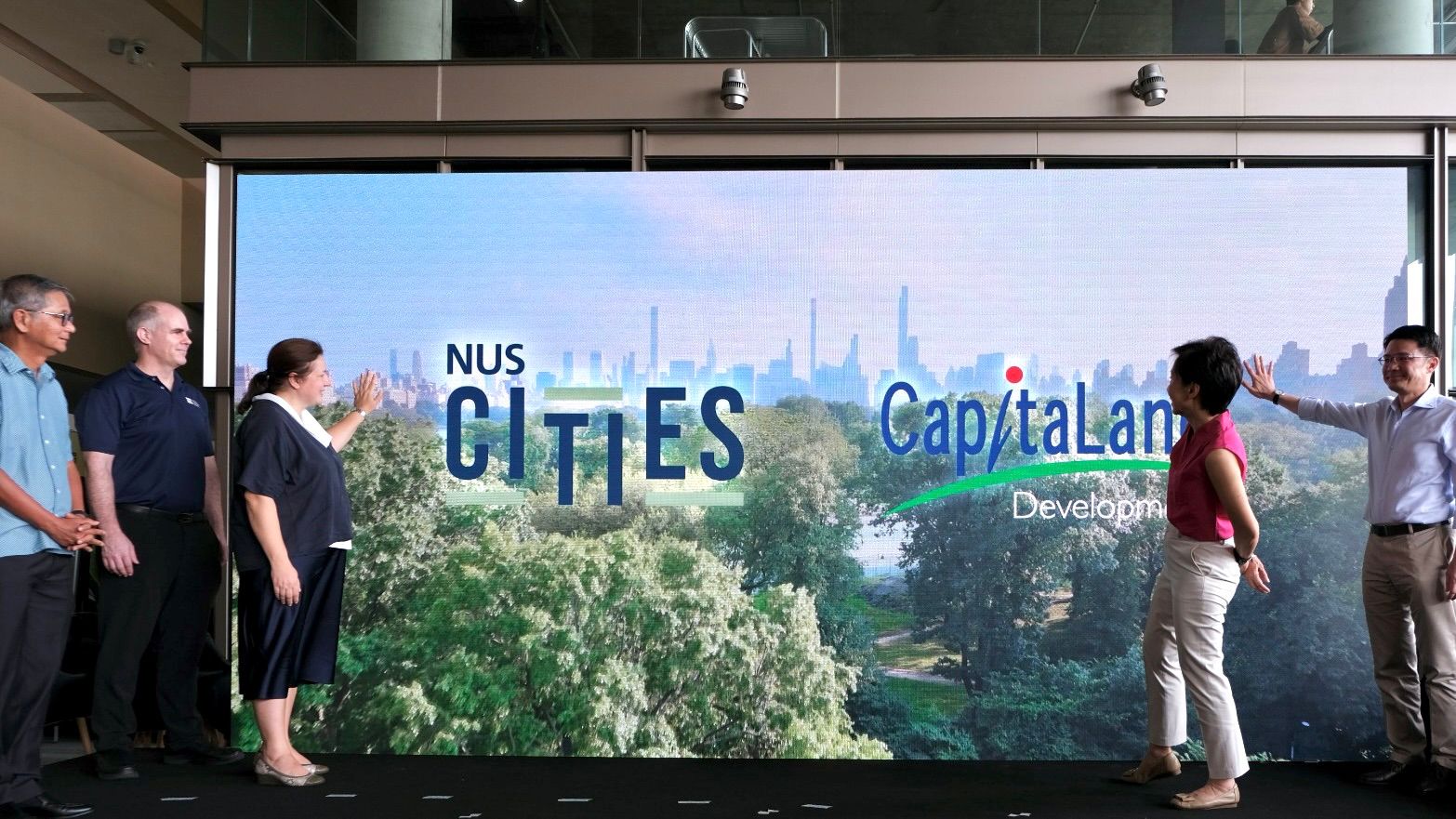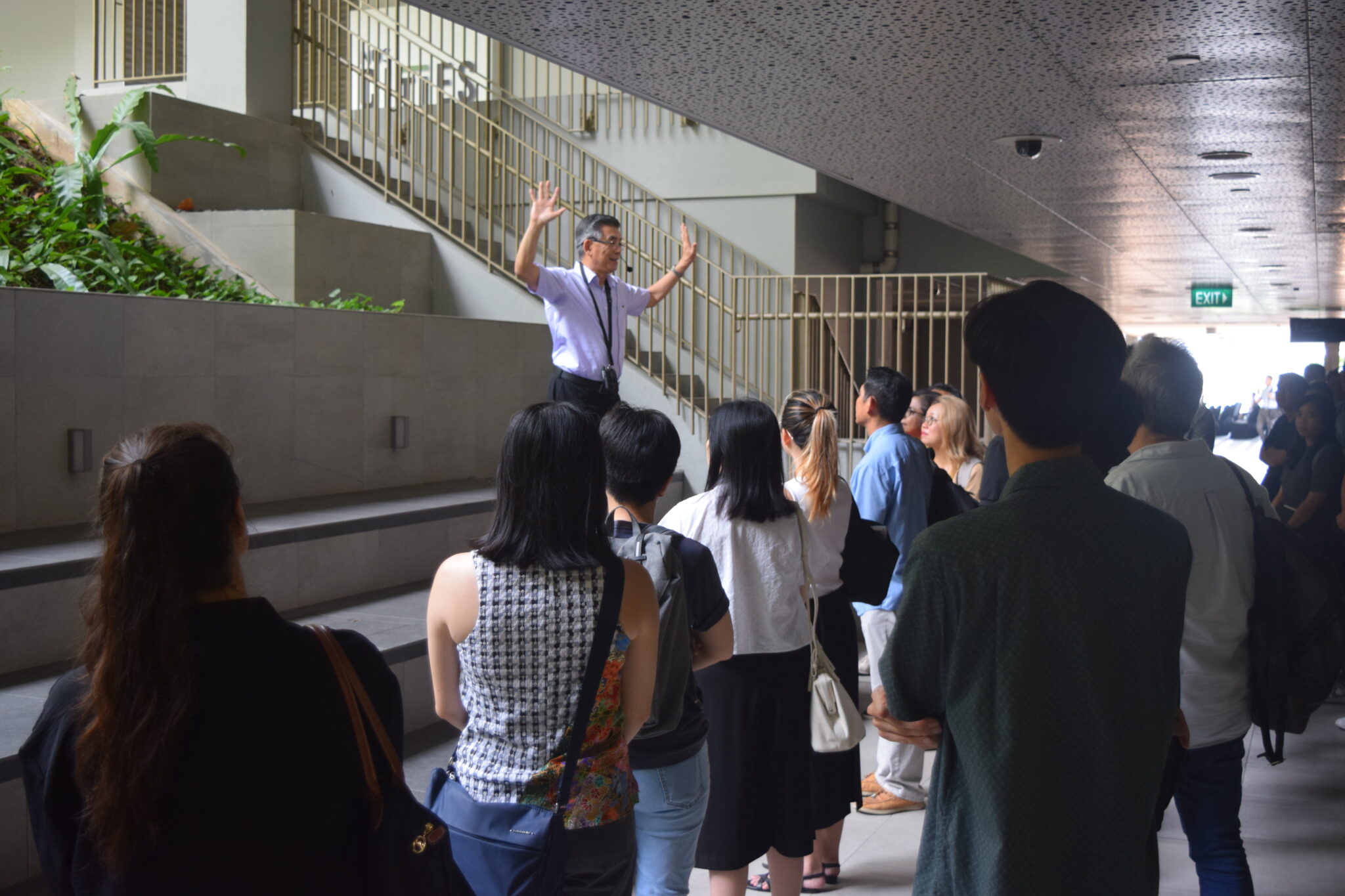Greening Singapore: NUS Cities explores the impact of green buildings on public health

Surrounded by lush greenery and tall pillars in a bright, airy open space, participants gathered in the open plaza at SDE 4 for NUS Cities’ event Towards a Healthy Singapore: Green Building Impact on Public Health. The Green Mark Platinum (Positive Energy) certified and WELL-certified building was the perfect setting for the event, focusing on green buildings and their impact on public health. An interdisciplinary entity hosted in CDE, NUS Cities serves as a platform for collaboration and innovation, bringing practitioners, faculty and students together to help develop solutions to make our cities more sustainable, resilient and liveable.
Organised by NUS Cities to support the Year of Public Hygiene, the event was filled with activities and programmes to nudge the community to do their part for a cleaner and greener Singapore. Serving as a platform for collaboration and innovation, the event saw community members of all ages coming together, including secondary school students, industry partners, academia, ministry officials and alumni participating in the event.
“This initiative echoes the historic ‘Keep Singapore Clean’ campaign launched in 1968 by our founding Prime Minister, Mr Lee Kuan Yew. This campaign was a cornerstone of Singapore’s early public health strategy, aiming to improve environmental conditions, enhance the quality of life, and foster national pride,” said NUS Cities Director, Professor Khoo Teng Chye, during his welcome address at the event on 26 Aug 2024.
From paper to practice
The event highlighted one such way sustainable building practices and their critical role in creating healthier cities. By designing spaces that are safe, accessible, and inviting, these practices help shape environments that encourage healthy behaviours.
Green buildings provide many benefits to building occupants, such as improved ventilation, reduced energy and water usage, and an improved indoor environment. The panel discussion convened leading experts from the Built Environment and public health sectors to discuss ways to ‘Green the Built Environment’ and its subsequent impacts on public health.
Moderated by Professor Lam Khee Poh, Provost Chair Professor, Department of Architecture and the Built Environment; Director (Advisory) at NUS Cities, the panel discussion featured Minister Grace Fu, Minister for Sustainability and the Environment, Mr Lee Ang Seng, President of the Singapore Green Building Council, Er Dr Johnny Wong, Deputy Chief Executive Officer at Housing Development Board and Mr Giovanni Cossu, Head of Sustainability at CapitaLand Development (CLD).
One common point between the panellists was the increasing adoption of green buildings in recent years. Mr Lee noted that there is an “unprecedented focus on green buildings, particularly after the (COVID-19) pandemic.” He added that many have drawn “strong linkages between public health and the quality of the indoor environment,” particularly how the air quality in indoor spaces can affect building occupants’ health.
As part of the Singapore Green Plan, Singapore targets at least 80% of its buildings to be green by 2030. Regulations and schemes are in place to help achieve this goal and create a greener built environment.
Touching on the factors that can enable and lead change, Minister Fu emphasised the important role of universities in helping Singapore achieve its goal of decarbonising by 2050. She added that “universities have a critical role of showing us the way to go and the pathway to take.”
However, enacting change comes with its own challenges—one of the most significant being changing mindsets, as stated by Er Dr Wong. Citing HDB’s pilot programme to implement the Pneumatic Waste Conveyance System (PWCS) at Yuhua, Er Dr Wong highlighted the importance and need to “educate and engage with the community to gain the confidence of residents and pull the community together” to change mindsets on the ground.
Collaborating with Industrial Partners
As oases of research and knowledge, universities can work with industrial partners to combine academic research with practical application to drive innovative and sustainable solutions.
The event saw the signing of a Memorandum of Understanding (MoU) between NUS Cities and CLD to launch a partnership to promote joint research and development activities in sustainable urban planning and design. The areas of cooperation include:
- Sustainability Awareness and Engagement Programmes
- Sustainable Urban Solutions
- Sustainability Expertise and Sponsorship Efforts

“CapitaLand Development is a strong advocate of sustainable practices given the impact that developments have on society and the environment... We are pleased to embark on a new trajectory with NUS, our longstanding partner, to strengthen CLD’s green competencies in urban frameworks and systems,” said Mr Johnathan Yap, CEO of CLD.
Industry partners were also invited to set up booths at the exhibition and feature their green products and initiatives. Minister Fu was given a tour of the exhibition and spoke to some of the industry partners there.
One of the booths she visited was ArcticGlide, a startup spun out from the NUS Graduate Research Innovation Programme (GRIP). Their patented coil technology helps reduce electricity consumption, minimising users’ carbon footprint. Universities often double up as incubators that support startups in sustainability, with programmes such as GRIP that provide mentorship and resources to help co-create solutions.
Getting the younger generation involved

The launch of the “Green Guardians of Singapore” booklet, in collaboration with the National Environment Agency (NEA) and Public Hygiene Council (PHC), aims to educate the public on environmental issues in Singapore.
Authored by Ms Yina Chua, Associate Director at NUS Cities, the plot is designed to illustrate key scientific findings on environmental issues. Through colourful illustrations and engaging storytelling, the booklet inspires readers to work together to achieve a cleaner, greener, and more resilient Singapore.
Mr Andrew Khng, Chairman of PHC, added, “We are very happy to collaborate with NUS Cities to jointly develop ‘The Green Guardians of Singapore’ booklet, which offers an innovative opportunity to actively involve and engage young readers on important public health issues.”
Hosted on NEA’s Clean and Green website, Ms Gloria Tan, Director, 3P Network Division at NEA hopes that the collaboration will “inspire young people to take proactive steps in their environmental efforts.”
The event made clear that the pathway to a cleaner, greener, and more resilient Singapore is a collective effort that requires close collaboration between the public and private sectors to achieve the changes.
This article first appeared on the NUS College of Design and Engineering website on 22 August 2024.
